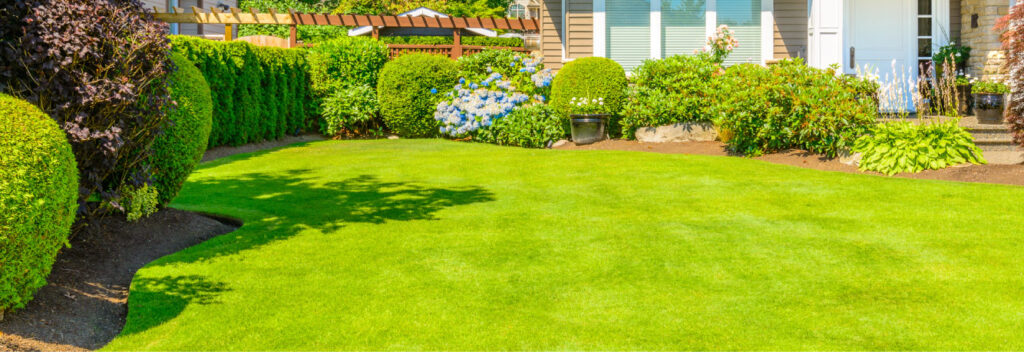Most all of us want a perfectly green lawn, precisely trimmed and edged so well that it captures the attention of those passing by. Sometimes, it seems like everyone around has one of those impeccable lawns while ours begs for improvement. The truth of the matter is, a beautiful, healthy lawn requires a lot of work but with some diligence, it can be achieved. Here are some tips from your Utah grass service experts at Lawngevity.
1. Choose Your Grass Wisely
Though there are hundreds of grass types to choose from, only a handful of them grow well in the Salt Lake Valley due to the region’s changing climate. These grass types are as follows:
- Kentucky Bluegrass. Popular around most of the United States, Kentucky Bluegrass looks great and handles winter weather very well.
- Tall Fescue. This grass is known for its resilience, able to withstand both cold and hot temperatures as well as heavy foot traffic.
- Fine Fescue. Though fairly resistant to foot traffic and weather, this grass does best under shady conditions.
- Perennial Ryegrass. This is another option that can thrive in both cold and hot climates and is popular in Utah yards.
2. Healthy Soil Means Happy Grass
Nutrient-rich soil provides for a great growing environment that grass can thrive in. Covering the soil with mulch can be beneficial to your grass and plants. Composting is also a great practice as it reintroduces organic matter into the ground and nourishes plant life. Composting is simple and can greatly benefit your lawn and garden.
3. Water Properly
Consistent watering practices are crucial for a green lawn. Underwatering or overwatering your grass can cause it to wilt or dry. It is best to water thoroughly 2-3 times a week as opposed to daily. It is also best to water early in the morning as opposed to the afternoon or evening. Most grass needs about 1 to 1.5 inches of water per week.
4. Aeration Is Key
Aeration carries many advantages. Not only does it improve air exchange between the soil and atmosphere, but it improves water and nutrient uptake among other things. It is advisable to aerate your lawn about once a year.
5. Healthy Grass Requires Nutrients
Choosing the right fertilizer and applying it at strategic times throughout the year can help your grass grow stronger and greener. Some fertilizers are more effective than others and application practices vary depending on location. It is a good idea to consult a professional before fertilizing your lawn.
6. Cut to the Correct Height
It’s important to keep your grass at its recommended height. If you cut grass too short, it become weak and unable to absorb the proper nutrients. If you let it grow too long, it’s harder to keep weeds and pests at bay— plus, it doesn’t look great. Here are the mowing height recommendations for the grasses mentioned above:
- Kentucky Bluegrass: 2 to 2.5 inches
- Tall Fescue: 2 to 3 inches
- Fine Fescue: 3 to 3.5 inches
- Perennial Ryegrass: 1.5 to 2.5 inches
7. Treat for Insects
Insects damage plants and grass by chewing on them and feeding on their vital fluids and nutrients. Though some bugs such as earthworms benefit your lawn, most insect species do more harm than good. It is important to treat for bugs to prevent an infestation in your yard. For more information on Lawngevity’s insect control services, check out our website.
Let Us Do the Work
At Lawngevity, we know grass. Our expertise is in making any lawn look as beautiful as it possibly can. If you are looking to improve the look of your lawn but don’t want to spend the time and energy, we can certainly help. We provide professional grass services that include lawn care, tree/shrub care, and insect control. Give us a call at 801-572-5777 for more information!


